By Guan-Cheng Sun, PHD, Jennifer C. Lovejoy, PHD, Sara Gillham, BA, Amy Putiri, MS, Masa Sasagawa, ND and Ryan Bradley, ND, MPH
From Diabetes Care
Study from the Bastyr University Research Institute, Kenmore, Washington.
Corresponding author: Guan-Cheng Sun, gsun@bastyr.edu.
Qigong is a traditional Chinese energy medicine practice combining breathing, movement, and meditation. Although previous studies suggest that Qigong may be a beneficial adjunct treatment for individuals with type 2 diabetes (1–3), few randomized controlled trials of Qigong in patients with type 2 diabetes have been performed. The purpose of the present study was to investigate the effects of Qigong relative to physical exercise or standard care on glucose control in adults with type 2 diabetes.
Two hundred fifty-one potential subjects were phone screened, 46 individuals were further evaluated at Bastyr University, and 32 eligible participants enrolled in the study. Age- and sex-matched participants were randomly assigned to one of three groups: group 1 (n = 11) received the Qigong intervention, group 2 (n = 10) served as the control group, and group 3 (n = 11) received the progressive resistance training (PRT) intervention as an active comparator. The mean age of the participants was 56.3 ± 8.1 years. Participants in all three groups were asked to maintain their conventional diabetes care, including medications, diet, and exercise, during the study. All participants were taking oral diabetes medication; however, none were taking insulin. Participants attended weekly Qigong or PRT group sessions (60 min per week) conducted by certified instructors in addition to practicing twice a week at home for 30 min per session. The study protocol was approved by Bastyr University Institutional Review Board, and informed consent was obtained from all participants.
Fasting plasma glucose, insulin, and A1C were measured before and after the 12-week intervention. Insulin resistance was estimated using the homeostasis model assessment of insulin resistance (HOMA-IR) index score based on fasting glucose and insulin values before and after the intervention (4). Statistically significant reductions in plasma glucose levels were observed in the Qigong group (184.9 ± 35.3 vs. 161.9 ± 40.5 mg/dl, P = 0.003 by paired t test). All participants in this group showed a reduction in fasting glucose by the end of the intervention relative to their starting value. In contrast, both the PRT group and the control group increased plasma glucose levels over time (143.8 ± 35.0 vs. 154.0 ± 44.7 and 156.4 ± 36.6 vs. 168.4 ± 49.1 mg/dl, respectively; not significant [NS]). Fasting glucose of the Qigong group significantly improved compared with that of the PRT group and the control group (P < 0.003 and P < 0.001, respectively, by one-way ANOVA). A1C remained unchanged in the control group during the intervention (7.9 ± 0.8 vs. 7.9 ± 1.6%) but declined slightly in both the PRT group (8.6 ± 1.2 vs. 7.9 ± 1.6, NS) and the Qigong group (8.8 ± 1.1 vs. 8.1 ± 1.3, NS). Fasting plasma insulin levels increased slightly in both the PRT group (24.3 ± 28.8 vs. 30.2 ± 39.9, NS) and the control group (12.6 ± 4.6 vs. 20.1 ± 10, P = 0.08) but remained unchanged during the intervention in the Qigong group (13.3 ± 6.2 vs. 13.4 ± 5.7, NS). Although differences were not statistically significant, HOMA-IR scores shifted favorably in the Qigong group (5.3 ± 2.3 vs. 4.7 ± 2.2) and unfavorably in both the PRT group (6.60 ± 6.00 vs. 8.91 ± 9.55) and the control group (4.48 ± 2.30 vs. 7.51 ± 4.21, P = 0.06).
Qigong therapy for 12 weeks resulted in significant reductions in fasting glucose levels in patients with type 2 diabetes and demonstrated trends toward improvement in insulin resistance and A1C. These results suggest that Qigong may be an effective complementary therapy for individuals with type 2 diabetes.
Acknowledgments
No potential conflicts of interest relevant to this article were reported.
Footnotes
Clinical trial reg. no. NCT00885846, clinicaltrials.gov.
Readers may use this article as long as the work is properly cited, the use is educational and not for profit, and the work is not altered.
© 2010 by the American Diabetes Association.
References
- Tsujiuchi T, Kumano H, Yoshiuchi K, He D, Tsujiuchi Y, Kuboki T, Suematsu H, Hirao K : The effect of Qi-gong relaxation exercise on the control of type 2 diabetes mellitus: a randomized controlled trial. Diabetes Care 2002; 25: 241–242
- Xin L, Miller YD, Brown WJ : A qualitative review of the role of qigong in the management of diabetes. J Altern Complement Med 2007; 13: 427–433
- Lee MS, Chen KW, Choi TY, Ernst E : Qigong for type 2 diabetes care: a systematic review. Complement Ther Med 2009; 17: 236–242
- Matthews DR, Hosker JP, Rudenski AS, Naylor BA, Treacher DF, Turner RC : Homeostasis model assessment: insulin resistance and beta-cell function from fasting plasma glucose and insulin concentrations in man. Diabetologia 1985; 28: 412–419


